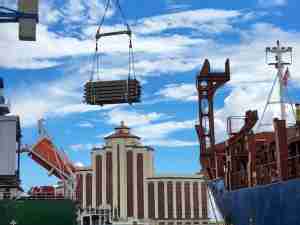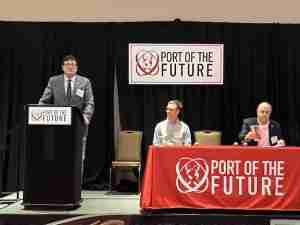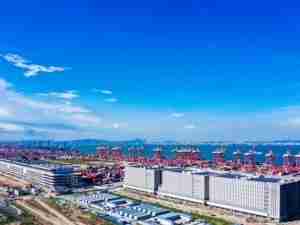The U.S. West Coast Collaboration is comprised of the major container ports on the West Coast – Seattle, Tacoma, Portland, Oakland, Long Beach and Los Angeles – along with BNSF Railway Company and Union Pacific Railroad. The Collaboration showcased the benefits of the West Coast as the premier region for trans-Pacific trade. The Summit in Qingdao is being held November 12 and 13, 2009.
According to Omar Benjamin, executive director of the Port of Oakland, who chaired the session that included the Collaboration panel, “Today’s economic conditions have compelled all of us to take a closer look at how we conduct our business to discover new approaches that yield improved results. This is happening throughout the entire supply chain and U.S. West Coast ports and Western railroads are no exception. Our mission is to further strengthen the U.S. West Coast ports’ position as the preferred gateway for Asia cargo to and from the Midwest and cities further east.”

Timothy J. Farrell, executive director of the Port of Tacoma, highlighted the advantages that the ports offer in terms of shipping choices and access to growing U.S. and international consumer markets. "We have more than 100 ships sailing to and from the West Coast each week," Farrell said, "providing access to 80 ports in 36 key consumer markets around the world. Looking to the future, our ports will provide strategic access to America’s consumers whose numbers are expected to grow to 228 million by 2030.”
John E. Kaiser, vice president and general manager of Union Pacific Railroad, commented, "Union Pacific has a long track record of investing in its network to support the growth of the West Coast ports and its customers. With valuable input from both, we use a systematic, structured approach. We have added capacity and enhanced service through new and expanded terminals, a new interline gateway and additional main line capacity. Working with the ports, we are creating faster, more reliable service, as well as greater access to growing markets throughout the United States."
According to John Lanigan, BNSF executive vice president and chief marketing officer, "BNSF and the other members of the U.S. West Coast Collaboration are committed to helping shippers get more from their supply chains. At BNSF alone, we have invested $30 billion to create a rail network that delivers more goods, to more markets faster and with less environmental impact than all-water alternatives."
Richard D. Steinke, executive director of the Port of Long Beach related, “The U.S. West Coast Ports are major players in world trade because of our deep water, vast container terminals, an unrivaled roadway and rail network, and the neighboring warehousing to complement our ports. These advantages enable us to handle more than $450 billion in trade a year. We are the best way to move trade between the U.S. and Asia.”
Bill Wyatt, executive director of the Port of Portland, talked about the U.S. West Coast Ports’ distinct advantage because of its geographic proximity to China, “This makes a compelling case for U.S. West Coast deployments because these deployments require fewer vessels, transit times are faster. The resultant bunker fuel requirement is much lower.” Wyatt added, “The typical U.S. East Coast services from North China into Norfolk or New York/New Jersey for example will require nine-11 vessels in a single loop vs. five-seven vessels required for most deployments into U.S. West Coast ports.”
Port of Los Angeles Executive Director Dr. Geraldine Knatz emphasized the extensive U.S. West Coast rail network and infrastructure,










